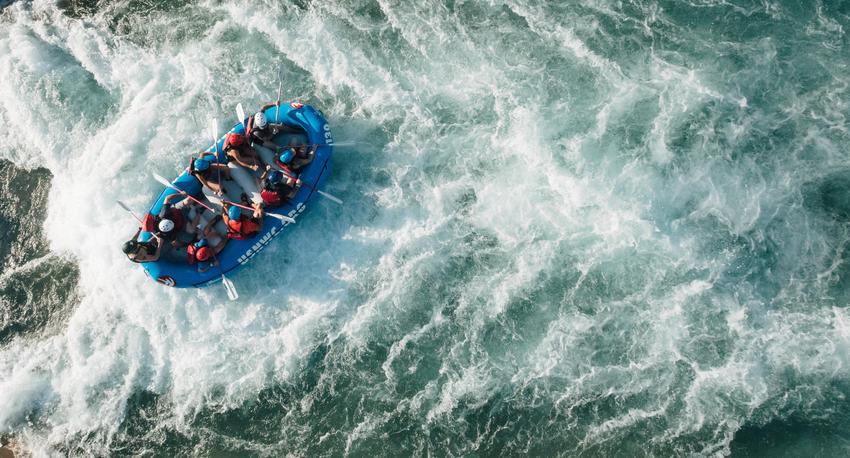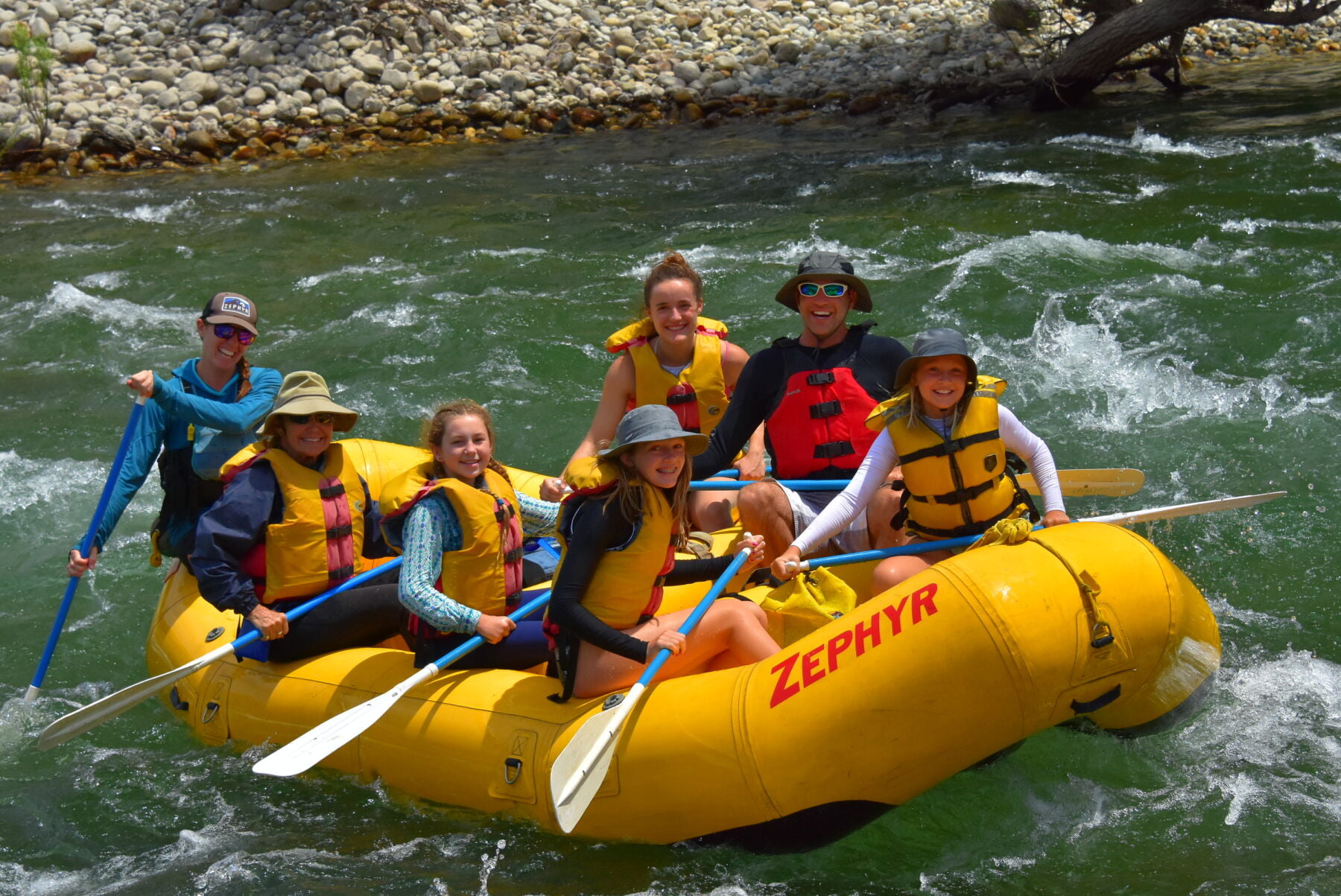Unforgettable White Water Rafting Colorado Trips Await
Important Abilities for Water Rafting
Understanding the art of water rafting needs a mix of precise skills and understanding to browse the unforeseeable currents of rivers, making it a thrilling yet possibly dangerous task. As fanatics get ready to start their following adventure, it is vital to equip oneself with essential proficiencies that go past simply paddling. From recognizing the ins and outs of river dynamics to swiftwater rescue techniques and seamless team communication, the trip down the river requires a blend of knowledge and versatility. With safety and security methods functioning as a keystone, individuals are confronted with a diverse obstacle that demands a precise strategy and undeviating emphasis.
Paddling Strategies
Understanding reliable paddling methods is essential for browsing water rafts safely and efficiently. One basic technique is the forward stroke, where paddlers dip the blade fully right into the water and draw it back alongside the raft to produce propulsion.
Apart from the forward stroke, the draw stroke is necessary for making fast modifications or drawing the boating better to a things. By putting the paddle blade vertical to the water's surface area and pulling the water in the direction of the boating, paddlers can properly alter the vessel's direction. Furthermore, the backstroke acts as a useful tool for supporting or decreasing the raft when necessary.
River Checking Out
Efficient paddling strategies, such as the forward stroke and draw stroke, play an essential function in browsing and translating river currents, an ability called river analysis. River reading entails the ability to evaluate the speed, deepness, and direction of the water circulation to make informed choices while browsing rapids. By comprehending just how the water moves around barriers and through various networks, rafters can select the ideal route to securely go across the river.
One secret facet of river reading is acknowledging numerous sorts of currents, consisting of hydraulics, eddies, and waves, and recognizing how they can impact the plethora. Eddies, as an example, are areas where the water streams in a round motion, commonly providing chances for remainder or critical maneuvers. Waves can indicate the existence of rocks or barriers, requiring quick modifications in paddling strategy. Hydraulics, generally referred to as "holes," are areas where water recirculates back upstream, presenting possible threats to rafts.
Grasping the skill of river reading is important for secure and delightful rafting experiences, enabling paddlers to navigate challenging waters with self-confidence and accuracy.

Swiftwater Rescue
Recognizing swiftwater rescue methods is critical for water rafting enthusiasts to respond successfully in emergency situation situations on fast-flowing rivers. Swiftwater rescue involves a set of specialized abilities and expertise focused on safely removing people from swift-moving water. One key aspect of swiftwater rescue is acknowledging the dangers existing in fast-flowing rivers, such as filters, undercut rocks, and solid currents, to plan and execute successful rescue operations.
Appropriate devices is necessary for swiftwater rescue, consisting of toss bags, rescue ropes, headgears, and individual flotation protection devices. Rafting enthusiasts must be proficient at using this equipment in high-stress situations to guarantee the website here security of themselves and others. Additionally, swiftwater rescue techniques typically include team effort and sychronisation among rafters to execute complex rescue maneuvers effectively.
Learning swiftwater rescue is highly advised for people taking part in water rafting activities, as it furnishes them with the required skills to handle emergency situations promptly and effectively. White Water Rafting Colorado. By comprehending and practicing swiftwater rescue strategies, water rafting lovers can improve their security and that of their fellow rafters on tough river explorations
Team Interaction
Reliable team effort in water rafting relies greatly on smooth communication amongst employee to ensure worked with and risk-free navigation via difficult river conditions. Clear and succinct communication is important for the success of any rafting expedition. Employee must be able to effectively communicate important info such as paddling commands, warning signals, and navigational guidelines.
In the commonly unpredictable and fast-paced environment of river rafting, punctual and precise communication can indicate the distinction between an effective run and a prospective disaster - White Water Rafting Colorado. Each employee plays an important role in the overall communication procedure, whether it be listening attentively to the guide's guidelines, communicating details to other paddlers, or signaling for help when required
Developing an usual language and interaction system prior to hitting the water is crucial. This guarantees that everybody gets on the exact same web page and recognizes just how to connect properly during the rafting journey. By promoting a society of open interaction and shared regard, rafting teams can enhance their efficiency and safety on the river.

Safety Protocols
In the context of water rafting, the structure of team interaction established during explorations is more strengthened with strict adherence to safety and security methods. Security procedures are vital in ensuring the wellness of both rafters and guides throughout water rafting expeditions. One necessary safety and security method is the correct wearing of personal flotation protection tools (PFDs) by every individual on the plethora. PFDs are critical in emergency situations to keep participants afloat and provide buoyancy. Additionally, rafters should be fluent in swiftwater rescue methods and protocols in case of someone falling over the top or if the raft capsizes.
Another secret security method is the thorough instruction provided by guides before beginning on a rafting trip. By purely sticking to these safety and security protocols, water rafting adventures can be both awesome and secure for all individuals included.
Final Thought
In final thought, grasping important abilities for investigate this site water rafting is vital for a secure and pleasurable experience on the river. Paddling methods, river analysis, swiftwater rescue, group interaction, and security methods are all necessary components that add to an effective rafting trip. By honing these skills, rafters can browse tough waters with confidence and make sure the safety and security of themselves and their staff member.
Mastering the art of water rafting needs a combination of accurate abilities and knowledge to navigate the unforeseeable currents check my source of rivers, making it a thrilling yet potentially dangerous task. By putting the paddle blade vertical to the water's surface and pulling the water in the direction of the boating, paddlers can successfully change the vessel's direction.Understanding swiftwater rescue techniques is crucial for water rafting enthusiasts to respond effectively in emergency situation circumstances on fast-flowing rivers.Efficient teamwork in water rafting relies heavily on seamless communication among group participants to make certain worked with and safe navigating with difficult river problems.In final thought, grasping vital skills for water rafting is critical for a enjoyable and safe experience on the river.